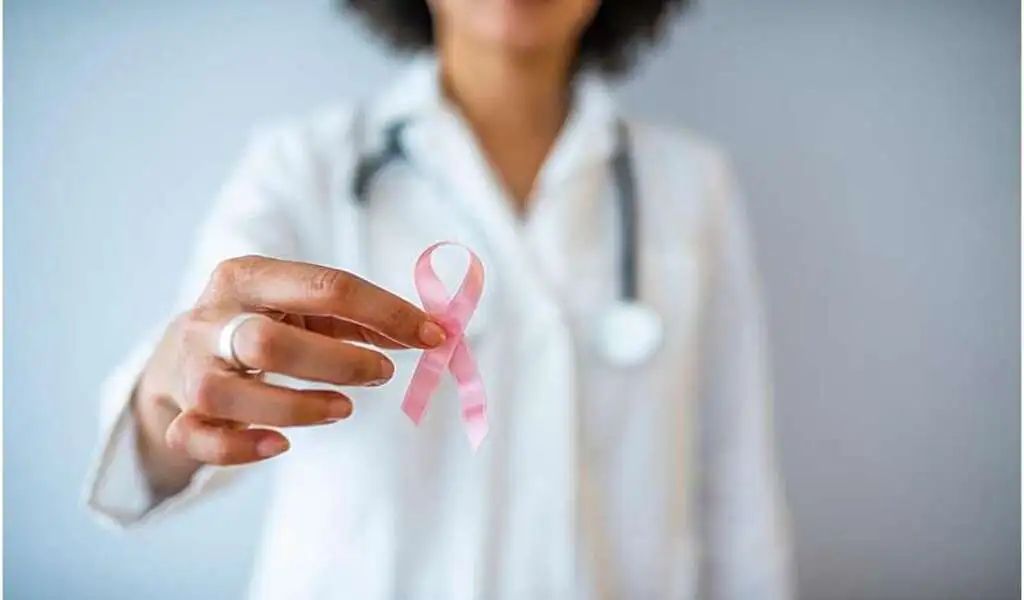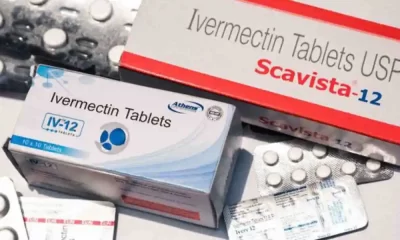Health
Nature’s Pharmacy: Exploring the Efficacy of Plant-Based Supplements

Plant-based supplements have garnered attention for their health-promoting benefits and potential to prevent or mitigate various ailments. They originate from nature’s own repository, offering a diverse array of phytochemicals derived from herbs, fruits, and vegetables.
Consumers are increasingly drawn to these natural alternatives, not just for general well-being but also for targeted health concerns. Touted for their efficacy, these supplements can complement modern medicine, although care must be taken to understand their proper use and interactions with other medications.
As interest in holistic health continues to rise, the scientific community has responded with rigorous studies to validate the claims surrounding plant-based supplements.
These natural products are often marketed as having fewer side effects compared to synthetic drugs, driving their popularity. However, safety remains a paramount concern, and thus, individuals are advised to approach herbal supplementation with informed caution.
Understanding the full potential of plant-based supplements necessitates a clear perspective on both their historical uses and the contemporary research that backs them up.
Natural does not always guarantee safety, so consumers should be circumspect, critically evaluating sources and consulting healthcare professionals. This balanced approach empowers individuals to make educated decisions in using nature’s pharmacy to support their health objectives.
The Essentials of Plant-Based Supplements
In the landscape of health and wellness, plant-based supplements are pivotal for their nutritional benefits and alignment with natural bodily processes.
Defining Phytonutrients
Phytonutrients, also known as phytochemicals, are compounds that plants produce to thrive and protect themselves against various threats. These substances have been found to offer significant health benefits when included in the human diet. There are thousands of phytonutrients, and they can be grouped into several categories, each with unique properties and health implications.
Categories of Plant-Based Supplements
Plant-based supplements encompass a variety of categories, each targeting different aspects of health:
- Antioxidants: Combat oxidative stress and may reduce the risk of chronic diseases.
- Anti-inflammatory: Aim to reduce inflammation, believed to be a precursor to many illnesses.
- Vitamins: Essential for body functions, deficiencies can lead to health problems.
- Minerals: Crucial for bone health, energy production, and more.
- Fiber: Supports digestive health and may help regulate blood sugar levels.
- Protein: Plant proteins provide the essential amino acids needed for muscle repair and growth.
By focusing on these categories, consumers can address specific health needs while committing to a plant-based lifestyle approach.
Historical Perspectives of Herbal Medicine
Herbal medicine has a rich and varied history, with evidence tracing its roots back to ancient civilizations. These traditional practices laid the foundation for modern phytotherapy and the use of plant-based supplements.
Ancient Uses of Medicinal Plants
Ancient civilizations recognized the value of plants in treating diseases. For instance:
- Ancient Egyptians: They documented medicinal uses of plants like garlic and juniper in the Ebers Papyrus.
- Traditional Chinese Medicine (TCM): Known for its holistic approach, it utilizes herbs like ginseng and goji berries, documented in Shen Nong’s Herbal Classic.
- Indian Ayurveda: With written records dating back to the Rigveda, it uses a wealth of herbs such as turmeric and ashwagandha for wellness and treatment.
Evolution of Phytotherapy
Phytotherapy, or the science of healing with plants, developed from these ancient practices:
- 16th to 18th Century: Herbal medicine was formalized in works like “The New Herbal” by William Turner.
- Scientific Revolution: Led to a decline in herbal medicine, as synthetic drugs took the forefront.
- Modern Resurgence: A growing interest in natural remedies and sustainability is fostering a renaissance in herbal medicine research and use.
Scientific Backing for Plant-Based Supplements
Research on plant-based supplements demonstrates a growing body of scientific evidence that underpins their efficacy and potential usage in modern pharmacotherapy. This evidence is rigorously tested through clinical trials and continues to evolve with recent scientific breakthroughs.
Clinical Trials and Efficacy
In the field of plant-based supplements, clinical trials serve as the cornerstone for establishing efficacy and safety. These trials are often randomized and placebo-controlled to provide reliable data on the therapeutic benefits of plant-derived compounds. For example, a clinical study on the efficacy of St. John’s Wort for treating mild to moderate depression showed a significant improvement in symptoms compared to placebo.
- Study: “St. John’s Wort for Depression”
- Sample Size: 200 patients
- Results:
- Treatment Group: 64% reported symptom improvement
- Placebo Group: 23% reported symptom improvement
Recent Scientific Breakthroughs
Recent breakthroughs in the field of phytopharmaceuticals highlight the innovation in plant-based drug development. One such breakthrough is the introduction of a novel category of medicine known as phytopharmaceutical drugs, which are derived from plants and are subjected to rigorous pharmacological evaluation. These drugs are designed to pinpoint and interact with specific biological pathways, offering targeted therapeutic effects.
- Breakthrough: Phytopharmaceutical Drug Development
- Impact:
- Enhanced specificity in drug action
- Potential reduction in side effects compared to conventional treatments
Benefits of Natural Compounds
Natural compounds from plants are integral in supporting human health. They offer a range of benefits from strengthening the immune system to preventing chronic diseases and aiding mental health.
Boosting Immunity
Natural products contain bioactive compounds like alkaloids, flavonoids, and polyphenols that can enhance immune function. These molecules can assist in activating immune cells and increasing the production of essential antibodies. Regular intake of these compounds can therefore prepare the body to better combat infections.
Chronic Disease Prevention
Plant-derived compounds have been linked with lower risks of various chronic conditions, including cardiovascular diseases and certain cancers. For instance:
- Antioxidants: Reduce oxidative stress and inflammation, key factors in chronic disease development.
- Phytochemicals: Such as curcumin and resveratrol, which have potential protective effects against tumor growth.
Mental Health Support
Natural supplements can play a supportive role in mental health. Certain herbal extracts, like those from St. John’s Wort or Ginkgo biloba, have been used to address symptoms of depression and anxiety. They work by influencing neurotransmitter systems in the brain, supporting mood regulation and cognitive function.
Safety and Risks of Herbal Supplements
Herbal supplements, while natural, carry the potential for side effects and interactions with pharmaceutical drugs. These risks underscore the importance of informed usage and consultation with healthcare professionals.
Understanding Side Effects
Herbs are potent agents that can cause adverse reactions in some individuals. Their strength varies, and so do individuals’ reactions to them. For instance, St. John’s wort, a commonly used herb for depression, may lead to skin sensitivity to sunlight, while ginkgo, known for enhancing memory, can cause headaches or stomach upset. These side effects can range from mild to severe, and close attention to one’s body’s response to an herbal supplement is crucial.
- Common side effects of various herbal supplements may include:
- Nausea
- Dizziness
- Headaches
- Allergic reactions
One must always follow the recommended dosages for any herbal supplement and consult a healthcare professional, especially if any adverse effects are observed.
Interactions with Pharmaceuticals
Herbal supplements can interact with prescription or over-the-counter medications. This can affect how the drugs work, potentially leading to reduced efficacy or increased toxicity. For example, ginkgo can interact with anticoagulants, leading to a higher risk of bleeding, while St. John’s wort can reduce the effectiveness of certain contraceptives and other medications.
- Examples of known interactions include:
- St. John’s wort
- May reduce the effectiveness of birth control pills.
- Can interact with antidepressants, leading to increased serotonin levels.
- Ginkgo biloba
- Can lead to increased risk of bleeding when taken with blood thinners.
- St. John’s wort
Healthcare providers must be informed of all the supplements and medications a person is taking to manage such interactions effectively. It is also advised that individuals cross-reference herbs with any current medications they are taking.
Choosing the Right Supplements
In selecting plant-based supplements, consumers must consider quality, purity, and adherence to regulatory standards. Understanding these factors ensures one selects a product that is both safe and effective.
Quality and Purity Standards
When assessing the quality and purity of supplements, one should look for evidence of third-party testing. This testing provides unbiased confirmation that the product contains what the label claims, without harmful levels of contaminants. Certification seals from organizations like the U.S. Pharmacopeia (USP), NSF International, or ConsumerLab.com indicate that a product has been tested and meets specific standards.
Consumers should also verify the source of the ingredients. High-quality supplements are often derived from organic or sustainably wild-harvested sources to avoid pesticides and other harmful additives.
Regulations and Labels
Navigating regulations and labels can be challenging, as the supplement industry’s regulations are less stringent than pharmaceuticals. In the United States, the Food and Drug Administration (FDA) does not approve dietary supplements for safety and effectiveness before they are marketed. However, it requires manufacturers to ensure their products are safe and accurately labeled.
Consumers should read labels meticulously. A label should include:
- The name of the supplement
- A complete list of ingredients
- The amount of each ingredient
- The serving size
Indications of Good Manufacturing Practices (GMP) and adherence to the Dietary Supplement Health and Education Act (DSHEA) are also signs of a reputable product. One should be cautious of supplements that claim to cure, treat, or prevent diseases, as such claims are not typically supported by evidence and are not allowed by the FDA.
Microdosing Options
In the realm of plant-based supplements, microdosing has emerged as a method to harness the speculated benefits of certain compounds without eliciting strong psychoactive or systemic effects. Microdosing involves administering sub-therapeutic doses of active plant constituents, aiming to achieve a “below threshold” level of impact.
- Psilocybin: Recent discussions on plant-based microdoses often revolve around psilocybin, the active compound found in certain mushrooms. Studies suggest that microdosing psilocybin may relate to mood and mental health improvements, although firm scientific consensus is pending.
- Herbal Supplements: Beyond psilocybin, there’s a growing interest in microdosing other herbal supplements. Consumers are looking to traditional remedies for subtle enhancements in well-being, cognition, or stress reduction.
| Herb | Common Use | Microdose Potential |
|---|---|---|
| Ginseng | Energy and focus | Adaptogenic support |
| St. John’s Wort | Mood regulation | Mild mood improvement |
| Turmeric | Anti-inflammatory | Overall wellness |
Italics are used for the scientific terms and foreign words that need emphasis, while bold text highlights the key terms.
While numerous anecdotal reports suggest benefits, the scientific community urges caution. Any supplement, including microdoses, should be considered with proper research and potential consultation with healthcare professionals, as natural compounds can interact with prescription medications and pre-existing health conditions. Safety, efficacy, and legality should be top considerations.
Specifically, for those considering microdose mushrooms Canada, it’s important to stay informed about the country-specific legal framework and regulations to ensure compliance and safe use within Canada. In exploring options, one might come across the Nutcracker mushroom strain, known for its unique properties among enthusiasts.
Similarly, the Lizard King mushroom are sought after for their distinctive characteristics and effects, highlighting the diversity within mushroom varieties for those interested in microdosing practices. It is crucial, however, to approach these strains with the same level of caution and awareness of legal and health implications.
For individuals exploring further into the realm of psychoactive substances, the use of a DMT pen Canada might come under consideration, reflecting an interest in different forms of experiencing altered states of consciousness. It is crucial, however, to approach these strains and tools with the same level of caution and awareness of legal and health implications, ensuring that any exploration is done within the bounds of safety and legality.
Integrating Supplements Into Your Diet
When incorporating plant-based supplements into one’s diet, it’s essential to do so thoughtfully, considering personal health goals and nutritional needs. Both a personalized supplement plan and the synergy with whole foods are crucial for optimizing health benefits.
Creating a Personalized Supplement Plan
Every individual has unique dietary requirements and health objectives. Here are some specific steps to create a personalized supplement plan:
- Assessment: Consult with a healthcare provider to assess your nutritional deficiencies and health goals.
- Research: Look into evidence-based benefits of different supplements, like how tinctures, when properly dosed, can act as concentrated forms of herbal remedies.
- Quality: Choose high-quality, plant-based supplements, verified for purity and potency.
- Dosage: Determine the appropriate dosage and frequency, aligning with both the supplement’s recommendations and personal health needs.
- Monitoring: Keep track of your body’s responses and adjust your plan as required.
Combining Supplements with Whole Foods
To maximize the efficacy of supplements:
- Synergistic Foods: Pair supplements with foods that enhance their absorption. For example, consuming vitamin C-rich foods can enhance the absorption of plant compounds.
- Timing: Coordinate the timing of supplements with meals to improve digestion and utilization. Some supplements are recommended to be taken with meals for better assimilation.
- Diversity: Integrate a variety of whole foods that can complement the supplements by providing a broad spectrum of nutrients and phytochemicals.
By personalizing a supplement plan and combining supplements with a balanced diet of whole foods, individuals can work toward enhanced health and wellbeing in a manner that respects the body’s natural processes and nutritional needs.
The Future of Plant-Based Medicine
In the coming years, plant-based medicine is poised to advance significantly through technological innovation and a focus on sustainability. These developments will be essential in harnessing the full therapeutic potential of medicinal plants.
Advancements in Supplement Technology
Recent trends indicate that plant-based supplements will benefit from enhanced delivery systems and bioavailability. Innovations such as microencapsulation and nanoparticle technology are expected to improve the efficacy of these supplements by ensuring more targeted delivery and controlled release of active compounds.
The integration of synthetic biology tools is projected to allow the precise synthesis of plant-derived compounds, potentially leading to the creation of more potent and specific medicinal supplements.
Sustainability and Ethical Sourcing
As demand for plant-based supplements increases, the importance of sustainable sourcing practices becomes paramount. The industry is expected to move towards more responsible cultivation methods that prioritize biodiversity and ecological balance.
Certification programs and traceability systems will likely become more prevalent, assuring consumers of the ethical origins of their supplements. This shift is anticipated to foster a closer connection between supplement manufacturers and local farming communities, ensuring that sourcing remains sustainable and beneficial for all stakeholders involved.
SEE ALSO: Understanding the Common Characteristics of Liver Disease
Health
Report Causes Pfizer Stock to Climb Approximately $1 Billion Acquired by Starboard

(VOR News) – According to a rumor that activist investor Pfizer Starboard Value has taken a holding in the struggling pharmaceutical business that is expected to be worth around one billion dollars, the stock of Pfizer (PFE) is on the increase in premarket trading on Monday.
This comes after the report was made public. The report was made available to the general public following this. Starboard Value was successful in moving forward with the acquisition of the position.
Starboard is said to have approached Ian Read, a former chief executive officer of Pfizer, and Frank D’Amelio, a former chief financial officer, in order to seek assistance with its goals of boosting the performance of the company, according to the Wall Street Journal. Read and D’Amelio are both former Pfizer executives.
The purpose of this is to facilitate the accomplishment of its objectives, which include enhancing the overall performance of the firm.
In their previous jobs, D’Amelio and Read were chief financial officers.
It is stated in the report that the hedge fund is of the opinion that Pfizer, which is currently being managed by Albert Bourla, who succeeded Read as Chief Executive Officer (CEO) in 2019, does not demonstrate the same level of mergers and acquisitions (M&A) discipline that Read did. Bourla took over for Read in 2019. Read was succeeded by Bourla in the year 2019.
Pfizer, a multinational pharmaceutical conglomerate, has made substantial investments in the acquisition of more companies that are involved in the research and development of cancer medicines.
These businesses have been acquired for billions of dollars. The biotechnology company Seagen, which was acquired by Pfizer in the previous year for a price of $43 billion, is included in this category. One of the businesses that can be classified as belonging to this category is Seagen.
In spite of the fact that the S&P 500 Index experienced a 21% increase in 2024.
No major trading occurred in Pfizer stock that year.
Due to the fact that the demand for Pfizer’s COVID-19 vaccines fell after the firm reached its pandemic peak in 2021, the share price of the corporation has decreased by over fifty percent since that time.
This drop has occurred ever since the company’s shares reached their maximum peak, which was during the time that this decline occurred. Not only have they not changed at all, but they have also remained essentially stable. This is in contrast to the S&P 500, which has gained 21% since the beginning of this year.
Recently, the corporation was forced to take a hit when it decided to recall all of the sickle cell illness medications that it had distributed all over the world.
Fears that the prescription could lead patients to experience severe agony and possibly even death were the impetus for the decision to recall the product. In spite of the fact that Pfizer’s stock is increasing by almost three percent as a result of the news that followed the company’s decision, this is the circumstance that has come about.
SOURCE: IPN
SEE ALSO:
New Study Reveals Drinking Soda Pop Increases the Risk of Stroke
The Mpox Vaccine’s Protection Decreases Within a Year; Booster Requirements
Health
New Study Reveals Drinking Soda Pop Increases the Risk of Stroke

A recent report from global research indicates that excessive consumption of coffee or soda pop is associated with an increased risk of stroke, although the intake of black and green tea is correlated with a reduced risk. Excessive consumption of soda pop or coffee warrants caution!
Recent research indicates that it may substantially elevate the risk of stroke.
Consuming four cups of coffee daily elevates the risk of stroke, according to studies, although ingesting 3-4 cups of black or green tea daily typically offers protection against stroke. Additionally, consume more coffee; it may reduce your risk of mortality.
Recent findings from global research studies co-led by the University of Galway and McMaster University, alongside an international consortium of stroke researchers, indicate that soda, encompassing both sugar-sweetened and artificially sweetened variants such as diet or zero sugar, is associated with a 22 percent heightened risk of stroke. The risk escalated significantly with the consumption of two or more of these beverages daily.
Stroke Risk Fizzy Drinks and Soda Pop
The correlation between fizzy drinks consumption and stroke risk was most pronounced in Europe, the Middle East, Africa, and South America. Women exhibit the most elevated risk of stroke from bleeding (intracranial hemorrhage) associated with fruit juice beverages. Consuming over 7 cups of water daily diminishes the likelihood of stroke due to a clot.
Researchers observed that numerous items advertised as fruit juice are derived from concentrates and have added sugars and preservatives, potentially negating the advantages often associated with fresh fruit and instead elevating stroke risk.
Fruit juice beverages were associated with a 37 percent heightened risk of stroke resulting from bleeding (intracranial hemorrhage). Consuming two of these beverages daily increases the risk thrice.
Consuming over four cups of coffee daily elevates the risk of stroke by 37 percent, although lower consumption levels do not correlate with stroke risk. Conversely, tea consumption was associated with an 18-20 percent reduction in stroke risk. Additionally, consuming 3-4 cups daily of black tea, such as Breakfast and Earl Grey varieties, excluding green and herbal teas, was associated with a 29 percent reduced risk of stroke.
Consuming 3-4 cups of green tea daily was associated with a 27 percent reduction in stroke risk. Notably, the addition of milk may diminish or inhibit the advantageous effects of antioxidants present in tea. The lower risk of stroke associated with tea consumption was negated for individuals who added milk.
Disclaimer: This article is intended solely for informational reasons and should not be considered a replacement for professional medical counsel. Consistently consult your physician regarding any inquiries pertaining to a medical problem.
Related News:
Starbucks Faces Sales Decline Amid Price Fatigue and Rising Competition
Starbucks Faces Sales Decline Amid Price Fatigue and Rising Competition
Health
Following a Diagnosis of Breast Cancer, What Else Should You Know?

(VOR News) – Even though breast cancer affects one in eight American women, receiving a diagnosis can make a woman feel isolated.
Experts in breast cancer from the American College of Physicians (ACS) advise patients on how to manage their disease so that they may better cope with this awful information.
First, the kind and stage of breast cancer dictates the course of your care.
In addition to immunotherapy and chemotherapy, there are various surgical options available for the treatment of breast cancer.
Women of African descent are disproportionately affected by triple-negative breast cancer, an extremely aggressive form of the disease that has never proven easy to treat.
According to the American Cancer Society, pembrolizumab (Keytruda), an immunotherapy, has been shown to be helpful when combined with chemotherapy and is currently the recommended course of treatment for certain combinations of triple-negative breast cancer.
In her presentation, Dr. Katharine Yao said, “It’s really important that the patient and physician discuss the patient’s preferences and values when deciding what type of treatment to pursue and that they have an honest, individualized discussion with their care team.”
She is currently responsible for developing breast cancer treatment recommendations for more than 575 hospitals and institutions nationwide in her role as chair of the American College of Surgeons’ National Accreditation Program for Breast Institutions (NAPBC).
Yao, vice chair of research at Endeavor Health NorthShore Hospitals in New York, pointed out that each decision made about a patient’s treatment plan should take her preferences and diagnosis into consideration.
She ought to think about whether she would prefer a mastectomy—a surgical procedure that involves removing the entire breast with or without reconstruction—or a lumpectomy, which involves a surgical procedure that spares part of the breast tissue.
She stated that “the breast cancer you have may be very different from the breast cancer you hear about in your neighbor, colleague, or friend” in a press release issued by the American Cancer Society (ACS).
“Consider that while discussing breast cancer with others.”
Throughout your journey, it is critical that you look after your emotional health because having breast cancer may have a detrimental impact on your mental health.
“Getting a cancer diagnosis does not mean that everything in your life stops to be normal.” Director of the Fellowship in the Diseases of the Breast program at the Winthrop P. Rockefeller Cancer Institute at the University of Arkansas and state head of the American Cancer Society Commission on Cancer for Arkansas, Dr. Daniela Ochoa She thinks adding the burden of a cancer diagnosis and treatment to all the other pressures in life may be taxing.
“Managing stress and emotional health is vital component of a treatment plan.”
Ochoa recommends clinically trained psychologists and social workers who have assisted people in coping with cancer to anyone receiving treatment. Learning coping techniques might also be facilitated by joining cancer support groups or cancer wellness initiatives.
Breast cancer specialists say your care team is crucial.
The American Cancer Society (ACS) defines comprehensive care as having support at every stage of the procedure from surgeons, oncologists, patient navigators, nurses, social workers, psychologists, and other specialists.
After receiving a breast cancer diagnosis, women should see a surgeon or medical oncologist to explore their options; nevertheless, treatment shouldn’t be discontinued after just one appointment or after surgery is over.
Additionally, you can ask trustworthy friends or family members to accompany you to appointments and aid you with research or notes. They could serve as a network of support for you.
Yao stated in his talk that “one of the most important things is that patients should search out a team they have confidence in, that they trust will have their back when they need it, and a team they feel they can get access to and that will help them when they are in need.”
SOURCE: MP
SEE ALSO:
The Mpox Vaccine’s Protection Decreases Within a Year; Booster Requirements
COVID was a Paradigm Shift in Health Policymaking, Says Commissioner Stella Kyriakides.
Rwanda Reports 8 Deaths Linked To Ebola-Like Marburg Virus Days After It Declared An Outbreak
-

 News3 years ago
News3 years agoLet’s Know About Ultra High Net Worth Individual
-
Entertainment1 year ago
Mabelle Prior: The Voice of Hope, Resilience, and Diversity Inspiring Generations
-

 Health3 years ago
Health3 years agoHow Much Ivermectin Should You Take?
-

 Tech2 years ago
Tech2 years agoTop Forex Brokers of 2023: Reviews and Analysis for Successful Trading
-

 Lifestyles2 years ago
Lifestyles2 years agoAries Soulmate Signs
-

 Health2 years ago
Health2 years agoCan I Buy Ivermectin Without A Prescription in the USA?
-

 Movies2 years ago
Movies2 years agoWhat Should I Do If Disney Plus Keeps Logging Me Out of TV?
-

 Learning2 years ago
Learning2 years agoVirtual Numbers: What Are They For?
